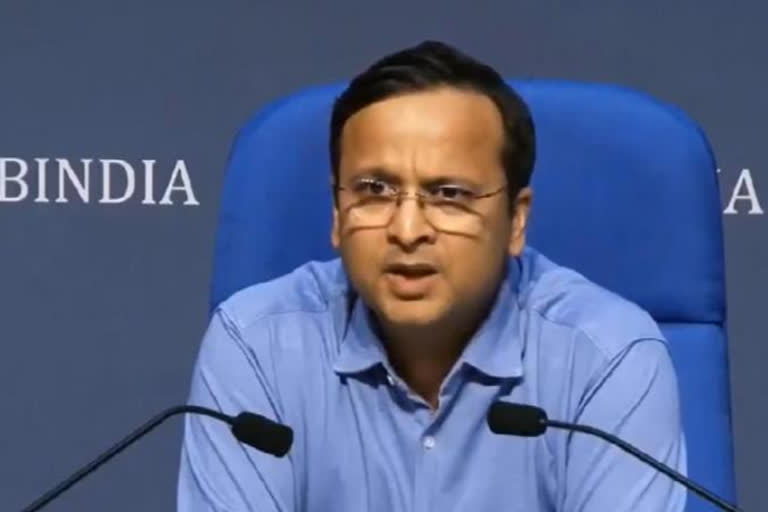New Delhi: As the nationwide lockdown 2.0 begins on Wednesday to fight against COVID 19, Union Ministry of Health and Family Welfare has divided districts across India into three zones.
Giving details of India's latest strategy to fight against COVID 19 pandemic, Lav Agarwal, joint secretary in the Health Ministry said that the major reason for creating these zones is to contain Covid19.
The districts of the country have been classified into three categories namely hotspot districts, non-hotspot districts but where cases are being reported and green zone districts.
He said that 170 districts have been identified as hotspots and 207 are potential (non) hotspots. Agarwal said that cabinet secretary Rajiv Gauba had a meeting with State chief secretaries and DGPs, health secretaries, municipal commissioners who had discussed containment strategy in hotspots.
"These containment strategies describe how to delineate the containment zone and buffer zone. In this containment zones, except for essential service, the rest of the movement and activities would be restricted. Cases will be actively monitored and surveyed by special teams in the containment zones as per sampling criteria. In these zones, the samples will be collected and tested," informed Agarwal.
In addition to this testing for any cases of influenza-like illness (ILI) and severe acute respiratory illness (SARI) with proper orientation of all health, facilities will be undertaken for the buffer zones.
"Special teams are to be set up to trace all contacts as well as to conduct house to house service. These teams will include the health staff, local revenue staff, corporation staff, Red Cross NSS, NYK, and other volunteers," said Agarwal.
He said that districts that have not reported any COVID cases yet have also been directed to work on cluster containment plans. In order to break the chain of transmission, the focus needs to be on contact tracing, monitoring and clinical management. India has registered 11439 COVID positive cases and 377 deaths as of now.
"An increase of 1076 new cases have been registered since yesterday. As many as 1306 people have also been cured which is 11.41 per cent of the total case," Agarwal said.
Union Minister for Health and Family Welfare Minister Dr Harsh Vardhan, on the other hand, had a high-level meeting over video conferencing with the World Health Organisation (WHO) officials.
Sources said Harsh Vardhan, during the meeting, has informed WHO about India's Covid19 containment strategy. Vardhan said that there are around 400 districts across India which were not affected by Covid19. "It has been a journey of three months now...We have been able to pinpoint where the virus is," he said.
WHO has reportedly hailed India's COVID containment strategy. In a related development, the Indian Council of Medical Research (ICMR) said that bats are not capable of affecting humans.
Regarding the presence of Coronavirus in Indian bats, Dr. Raman R Gangakhedkar said, "It's rare, maybe once in 1000 years that it gets transmitted from bats to humans. However, as per research in China, it was found that coronavirus might have originated due to mutation in bats. Bats might have transmitted it to pangolins and from pangolins, it got transmitted to humans."
Meanwhile, Home Secretary Ajay Kumar Bhalla has written to States and UTs to ensure strict compliance with consolidated revised guidelines on lockdown measures to contain the COVID-19 epidemic in the country.
Bhalla said that states and UTs cannot dilute restrictions imposed via aforesaid guidelines. However, to mitigate hardship to the public, select additional activities that will be allowed from April 20.
"These additional activities will be operationalized by States and UTs as well as district administrations based on strict compliance to the existing guidelines on lockdown measures," Bhalla said.
As per the consolidated guidelines on lockdown measures and national directives, all Indian made foreign liquor (IMFL) shops, wholesale warehouses, bottling plants, distilleries & breweries in Assam shall remain closed till May 3.
Meanwhile, police security at Lok Nayak Jai Prakash Narayana hospital in Delhi had been tightened after female resident doctors and another staff was threatened by the patients on Tuesday. An FIR has also been lodged in this connection.
ALSO READ: Special flight brings newborn to Belagavi for treatment



